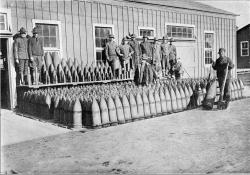
During the 1930's, research into advanced ballistic measurement techniques began at Aberdeen Proving Ground—the world's first large-scale, fully-instrumented ballistic range producing data on the aerodynamic characteristics of missiles in free flight.
Although this research had begun before the German Army entered Poland, the crisis of World War II gave incentive to incorporate this pioneering research into the design and construction of the Aerodynamics Range at the U.S. Army Ballistic Research Laboratory. The facility was unique for its time and established the capability to study, in detail, the aerodynamics of bodies in supersonic free flight.
The Aerodynamics Range is an enclosed facility instrumented to launch a missile in free flight and record its motion over 285 feet of the trajectory. The technique for obtaining the aerodynamic coefficients demands unusual accuracy in the measurement of time, distance, and angle. The required accuracy in distance and angle was developed using spark photography. This recording procedure gives distance accuracy to 0.001-foot and angular accuracy to 2 minutes of arc. The roll angle can be determined to an accuracy of less than 1 degree. Time interval measurements are obtained to an accuracy of 0-1 microsecond.
This process has recorded the flight of projectiles, missiles, and aircraft important to the national defense. Personnel, working in this original installation, have contributed to technical disciplines ranging from photography and high speed circuit design to the theory of flight. The Range is recognized as the prototype for similar installations within the United States and abroad


